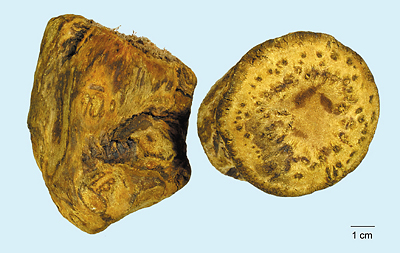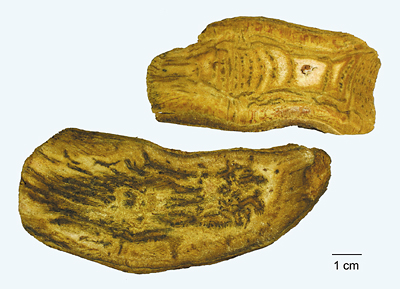Rhubarb
Rhubarb
Dahuang
大黃
Source
The root and rhizome of Rheum palmatum L. (Fam. Polygonaceae).
Distribution
Mainly in Chinese provinces such as Gansu, Qinghai and Sichuan, and in Tibet. Mostly cultivated.
Harvest & Processing
Dig up roots and rhizomes in late autumn when leaves wither or in the following spring before germination; remove soil and rootlets; scrape off cork (do not use metal instruments); cut into slices or sections or process into egg shape or cylindrical shape; string pieces together and dry, or dry without stringing.
Description
Subcylindrical, ovoid or hippocrepiform pieces, or irregular slices or sections. When cork is completely removed, outer surface yellowish- brown to reddish-brown; in some cases surface marked with off-white anomalous vascular bundles or with remnants of reddishbrown cork. Hard and solid. When broken, surface pale reddishbrown or yellowish-brown, granular. Pith in cross-section of rhizome relatively large; 'star-like' spots in cross-section, appearing in rings or scattered form. Cambium ring of root conspicuous; xylem well-developed, with radial rays and no star-like dots. Odour: fresh and fragrant; taste: bitter and slightly astringent; sticky when chewed, gritty, turns saliva yellow.
Indications
1. Constipation and intestinal obstruction, dysentery
2. Bleeding
3. Carbuncles and furuncles, burns and scalds
4. Amenorrhoea, postpartum abdominal pain
5. Jaundice
Chemical Composition
Mainly contains anthraquinones such as emodin aloe-emodin; also contains condensed tannins.
Note
According to C.P., also used for medicinal purposes is the root and rhizome of R. tanguticum Maxim.ex Balf. and R. officinale Baill.
Photos


